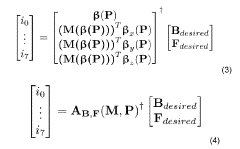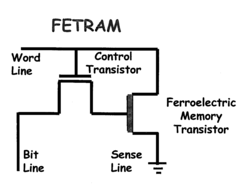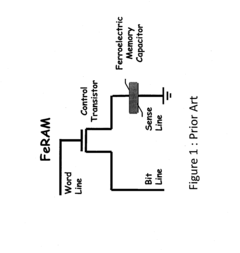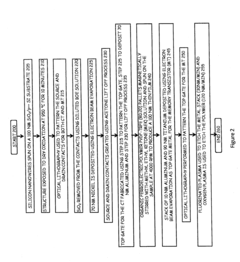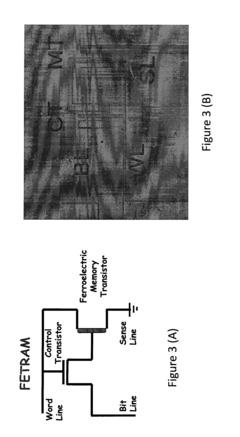The Future of Ferrofluid in Next-Gen Computing Technologies
JUL 9, 20259 MIN READ
Generate Your Research Report Instantly with AI Agent
Patsnap Eureka helps you evaluate technical feasibility & market potential.
Ferrofluid Computing Evolution and Objectives
Ferrofluid computing represents a groundbreaking frontier in next-generation computing technologies, blending the principles of magnetism and fluid dynamics to create novel computational paradigms. The evolution of this field can be traced back to the discovery of ferrofluids in the 1960s, initially developed for NASA to control liquids in zero gravity. Over the decades, researchers have gradually recognized the potential of these magnetic nanofluids for information processing and storage.
The trajectory of ferrofluid computing has been marked by significant milestones. Early experiments focused on manipulating ferrofluid droplets as binary bits, laying the foundation for more complex operations. As nanotechnology advanced, scientists began exploring the quantum properties of ferrofluids, opening doors to potential quantum computing applications. Recent breakthroughs in spintronics and magneto-optical effects have further expanded the possibilities for ferrofluid-based computational systems.
Current research objectives in ferrofluid computing are multifaceted and ambitious. One primary goal is to develop robust, scalable architectures that can leverage the unique properties of ferrofluids for high-performance computing. This includes creating three-dimensional computational structures that utilize the fluid nature of the medium to achieve unprecedented levels of parallelism and efficiency.
Another key objective is to enhance the stability and controllability of ferrofluid systems under various environmental conditions. Researchers are working on developing new ferrofluid compositions and containment technologies to ensure reliable operation across a wide range of temperatures and magnetic field strengths. This is crucial for the practical implementation of ferrofluid computing in real-world scenarios.
The integration of ferrofluid computing with existing technologies is also a significant focus. Scientists are exploring ways to interface ferrofluid-based systems with conventional electronic circuits, creating hybrid architectures that combine the strengths of both paradigms. This could lead to novel computing devices that offer superior performance in specific applications, such as pattern recognition or complex system modeling.
Looking ahead, the field of ferrofluid computing aims to push the boundaries of computational capabilities. Researchers envision developing systems that can perform massively parallel operations with minimal energy consumption, potentially revolutionizing areas such as artificial intelligence and big data analytics. The ultimate goal is to create a new class of computers that can tackle complex problems currently beyond the reach of traditional silicon-based systems, opening up new frontiers in scientific discovery and technological innovation.
The trajectory of ferrofluid computing has been marked by significant milestones. Early experiments focused on manipulating ferrofluid droplets as binary bits, laying the foundation for more complex operations. As nanotechnology advanced, scientists began exploring the quantum properties of ferrofluids, opening doors to potential quantum computing applications. Recent breakthroughs in spintronics and magneto-optical effects have further expanded the possibilities for ferrofluid-based computational systems.
Current research objectives in ferrofluid computing are multifaceted and ambitious. One primary goal is to develop robust, scalable architectures that can leverage the unique properties of ferrofluids for high-performance computing. This includes creating three-dimensional computational structures that utilize the fluid nature of the medium to achieve unprecedented levels of parallelism and efficiency.
Another key objective is to enhance the stability and controllability of ferrofluid systems under various environmental conditions. Researchers are working on developing new ferrofluid compositions and containment technologies to ensure reliable operation across a wide range of temperatures and magnetic field strengths. This is crucial for the practical implementation of ferrofluid computing in real-world scenarios.
The integration of ferrofluid computing with existing technologies is also a significant focus. Scientists are exploring ways to interface ferrofluid-based systems with conventional electronic circuits, creating hybrid architectures that combine the strengths of both paradigms. This could lead to novel computing devices that offer superior performance in specific applications, such as pattern recognition or complex system modeling.
Looking ahead, the field of ferrofluid computing aims to push the boundaries of computational capabilities. Researchers envision developing systems that can perform massively parallel operations with minimal energy consumption, potentially revolutionizing areas such as artificial intelligence and big data analytics. The ultimate goal is to create a new class of computers that can tackle complex problems currently beyond the reach of traditional silicon-based systems, opening up new frontiers in scientific discovery and technological innovation.
Market Potential for Ferrofluid-Based Computing
The market potential for ferrofluid-based computing technologies is poised for significant growth in the coming years. As traditional computing approaches face limitations in terms of speed, energy efficiency, and miniaturization, ferrofluid-based solutions offer promising alternatives that could revolutionize the industry.
The global market for advanced computing technologies is expected to expand rapidly, driven by increasing demand for high-performance computing in various sectors such as artificial intelligence, data analytics, and scientific research. Ferrofluid-based computing, with its unique properties and potential applications, is well-positioned to capture a substantial share of this growing market.
One of the key drivers for the adoption of ferrofluid-based computing is its potential to overcome the limitations of current semiconductor technologies. As Moore's Law reaches its physical limits, the industry is actively seeking alternative computing paradigms. Ferrofluid-based systems, with their ability to manipulate magnetic nanoparticles for information processing, offer a novel approach that could extend computational capabilities beyond traditional silicon-based architectures.
The healthcare and biotechnology sectors present significant opportunities for ferrofluid-based computing. The technology's potential applications in drug discovery, personalized medicine, and medical imaging could drive substantial market growth. As these industries increasingly rely on complex data analysis and simulations, the demand for more powerful and efficient computing solutions is likely to surge.
In the field of quantum computing, ferrofluids show promise as a platform for developing quantum bits or qubits. This application could open up new avenues in the quantum computing market, which is projected to experience exponential growth in the coming decades. The unique properties of ferrofluids, such as their ability to maintain quantum coherence, make them attractive candidates for quantum information processing.
The automotive and aerospace industries are also potential markets for ferrofluid-based computing. As vehicles and aircraft become more autonomous and data-driven, the need for advanced onboard computing systems increases. Ferrofluid-based technologies could offer compact, energy-efficient solutions for real-time data processing and decision-making in these applications.
However, the market potential of ferrofluid-based computing is not without challenges. The technology is still in its early stages, and significant research and development efforts are required to bring it to commercial viability. Additionally, competition from other emerging computing technologies, such as neuromorphic computing and photonic computing, may impact market share.
Despite these challenges, the unique properties of ferrofluids and their potential to address critical limitations in current computing technologies suggest a promising market outlook. As research progresses and practical applications emerge, ferrofluid-based computing is likely to carve out a significant niche in the next generation of computing technologies.
The global market for advanced computing technologies is expected to expand rapidly, driven by increasing demand for high-performance computing in various sectors such as artificial intelligence, data analytics, and scientific research. Ferrofluid-based computing, with its unique properties and potential applications, is well-positioned to capture a substantial share of this growing market.
One of the key drivers for the adoption of ferrofluid-based computing is its potential to overcome the limitations of current semiconductor technologies. As Moore's Law reaches its physical limits, the industry is actively seeking alternative computing paradigms. Ferrofluid-based systems, with their ability to manipulate magnetic nanoparticles for information processing, offer a novel approach that could extend computational capabilities beyond traditional silicon-based architectures.
The healthcare and biotechnology sectors present significant opportunities for ferrofluid-based computing. The technology's potential applications in drug discovery, personalized medicine, and medical imaging could drive substantial market growth. As these industries increasingly rely on complex data analysis and simulations, the demand for more powerful and efficient computing solutions is likely to surge.
In the field of quantum computing, ferrofluids show promise as a platform for developing quantum bits or qubits. This application could open up new avenues in the quantum computing market, which is projected to experience exponential growth in the coming decades. The unique properties of ferrofluids, such as their ability to maintain quantum coherence, make them attractive candidates for quantum information processing.
The automotive and aerospace industries are also potential markets for ferrofluid-based computing. As vehicles and aircraft become more autonomous and data-driven, the need for advanced onboard computing systems increases. Ferrofluid-based technologies could offer compact, energy-efficient solutions for real-time data processing and decision-making in these applications.
However, the market potential of ferrofluid-based computing is not without challenges. The technology is still in its early stages, and significant research and development efforts are required to bring it to commercial viability. Additionally, competition from other emerging computing technologies, such as neuromorphic computing and photonic computing, may impact market share.
Despite these challenges, the unique properties of ferrofluids and their potential to address critical limitations in current computing technologies suggest a promising market outlook. As research progresses and practical applications emerge, ferrofluid-based computing is likely to carve out a significant niche in the next generation of computing technologies.
Ferrofluid Tech Challenges and Limitations
Despite the promising potential of ferrofluids in next-generation computing technologies, several significant challenges and limitations currently hinder their widespread adoption and practical implementation. One of the primary obstacles is the long-term stability of ferrofluids. Over time, these magnetic nanofluids tend to agglomerate and settle, leading to a loss of their unique properties and functionality. This instability poses a major hurdle for developing reliable and durable ferrofluid-based computing components.
Another critical challenge lies in the precise control and manipulation of ferrofluids at the nanoscale. While ferrofluids respond to external magnetic fields, achieving the level of precision required for advanced computing applications remains difficult. This limitation impacts the development of high-resolution ferrofluid-based displays and intricate microfluidic systems for data processing.
The thermal management of ferrofluids in computing environments presents another significant hurdle. As computing systems generate substantial heat, maintaining the optimal temperature range for ferrofluids to retain their magnetic properties becomes crucial. Overheating can lead to the breakdown of the fluid's structure and the loss of its magnetic responsiveness, potentially compromising the entire system's functionality.
Compatibility issues between ferrofluids and traditional electronic components also pose a considerable challenge. Integrating ferrofluids into existing computing architectures requires addressing potential chemical interactions and electromagnetic interference. These compatibility concerns necessitate the development of specialized interfaces and protective measures to ensure seamless integration without compromising the performance of either the ferrofluid or the electronic components.
The scalability of ferrofluid-based technologies for mass production and commercial applications remains a significant limitation. Current manufacturing processes for high-quality ferrofluids are complex and costly, making large-scale production economically challenging. This scalability issue hampers the transition of ferrofluid-based computing technologies from laboratory prototypes to commercially viable products.
Environmental and health concerns associated with ferrofluids also present limitations to their widespread adoption. The potential toxicity of nanoparticles used in ferrofluids and their long-term environmental impact are areas that require further research and regulatory consideration. Addressing these safety concerns is crucial for gaining public acceptance and regulatory approval for ferrofluid-based computing technologies.
Lastly, the lack of standardization in ferrofluid production and characterization methods poses challenges for consistent performance across different applications and research efforts. Establishing industry-wide standards for ferrofluid properties, testing protocols, and quality control measures is essential for advancing the field and ensuring reproducibility in research and development.
Another critical challenge lies in the precise control and manipulation of ferrofluids at the nanoscale. While ferrofluids respond to external magnetic fields, achieving the level of precision required for advanced computing applications remains difficult. This limitation impacts the development of high-resolution ferrofluid-based displays and intricate microfluidic systems for data processing.
The thermal management of ferrofluids in computing environments presents another significant hurdle. As computing systems generate substantial heat, maintaining the optimal temperature range for ferrofluids to retain their magnetic properties becomes crucial. Overheating can lead to the breakdown of the fluid's structure and the loss of its magnetic responsiveness, potentially compromising the entire system's functionality.
Compatibility issues between ferrofluids and traditional electronic components also pose a considerable challenge. Integrating ferrofluids into existing computing architectures requires addressing potential chemical interactions and electromagnetic interference. These compatibility concerns necessitate the development of specialized interfaces and protective measures to ensure seamless integration without compromising the performance of either the ferrofluid or the electronic components.
The scalability of ferrofluid-based technologies for mass production and commercial applications remains a significant limitation. Current manufacturing processes for high-quality ferrofluids are complex and costly, making large-scale production economically challenging. This scalability issue hampers the transition of ferrofluid-based computing technologies from laboratory prototypes to commercially viable products.
Environmental and health concerns associated with ferrofluids also present limitations to their widespread adoption. The potential toxicity of nanoparticles used in ferrofluids and their long-term environmental impact are areas that require further research and regulatory consideration. Addressing these safety concerns is crucial for gaining public acceptance and regulatory approval for ferrofluid-based computing technologies.
Lastly, the lack of standardization in ferrofluid production and characterization methods poses challenges for consistent performance across different applications and research efforts. Establishing industry-wide standards for ferrofluid properties, testing protocols, and quality control measures is essential for advancing the field and ensuring reproducibility in research and development.
Current Ferrofluid Computing Solutions
01 Composition and preparation of ferrofluids
Ferrofluids are colloidal suspensions of magnetic nanoparticles in a carrier fluid. They are typically composed of magnetite or other ferromagnetic materials coated with a surfactant to prevent agglomeration. The preparation process involves careful control of particle size and distribution to maintain stability and magnetic properties.- Composition and preparation of ferrofluids: Ferrofluids are colloidal suspensions of magnetic nanoparticles in a carrier fluid. They are typically composed of magnetite or other ferromagnetic materials coated with surfactants to prevent agglomeration. The preparation process involves careful control of particle size, distribution, and stability to achieve desired magnetic and fluid properties.
- Applications in sealing and lubrication: Ferrofluids are widely used in sealing and lubrication applications, particularly in rotating shaft seals and bearings. Their unique properties allow them to form liquid seals that can be controlled by magnetic fields, providing effective containment of gases and liquids while reducing friction and wear in mechanical systems.
- Thermal management and heat transfer: Ferrofluids exhibit enhanced heat transfer properties due to their magnetic nature. They are used in cooling systems for electronic devices, transformers, and other heat-generating equipment. The ability to manipulate ferrofluids with magnetic fields allows for targeted and efficient heat dissipation in various applications.
- Magnetic field sensing and measurement: Ferrofluids are employed in various sensing and measurement devices that rely on magnetic field detection. These applications include magnetometers, accelerometers, and position sensors. The response of ferrofluids to magnetic fields enables precise and sensitive measurements in diverse fields such as geophysics, navigation, and industrial process control.
- Medical and biomedical applications: Ferrofluids have emerging applications in medicine and biotechnology. They are used in targeted drug delivery systems, magnetic hyperthermia for cancer treatment, and as contrast agents in magnetic resonance imaging (MRI). The ability to control ferrofluids with external magnetic fields offers new possibilities for minimally invasive medical procedures and diagnostics.
02 Applications in sealing and lubrication
Ferrofluids are widely used in sealing and lubrication applications, particularly in rotating shaft seals and bearings. Their unique properties allow them to form liquid seals that can be controlled by magnetic fields, providing effective containment of gases and liquids while reducing friction and wear in mechanical systems.Expand Specific Solutions03 Thermal management and heat transfer
Ferrofluids have excellent heat transfer properties and are used in thermal management applications. They can be magnetically guided to hot spots in electronic devices or used in cooling systems. Their ability to respond to magnetic fields allows for precise control of heat distribution and dissipation.Expand Specific Solutions04 Magnetic field sensing and measurement
Ferrofluids are employed in various sensing and measurement devices that rely on magnetic field detection. Their response to magnetic fields can be used to create highly sensitive instruments for detecting and measuring magnetic field strength and direction, with applications in scientific research and industrial processes.Expand Specific Solutions05 Advanced manufacturing and material processing
Ferrofluids are utilized in advanced manufacturing processes and material treatments. They can be used for precision polishing of optical components, as a medium for magnetic separation of materials, and in the development of smart materials that respond to magnetic fields. These applications leverage the unique behavior of ferrofluids under magnetic influence.Expand Specific Solutions
Key Players in Ferrofluid Computing Research
The future of ferrofluid in next-gen computing technologies is in an early development stage, with a growing market potential as research progresses. The technology's maturity is still evolving, with key players like Intel, Cornami, and Sony Group Corp. exploring its applications. These companies are investing in research to leverage ferrofluid's unique properties for potential breakthroughs in thermal management, data storage, and quantum computing. As the technology advances, we can expect increased competition and collaboration among tech giants and research institutions to unlock ferrofluid's full potential in computing applications.
Intel Corp.
Technical Solution: Intel is exploring ferrofluid-based computing technologies for next-generation data processing. Their approach involves using ferrofluid as a dynamic medium for magnetic domain manipulation, potentially enabling novel forms of non-volatile memory and logic circuits. Intel's research focuses on developing nanoscale ferrofluid particles with precisely controlled magnetic properties, which can be manipulated using external magnetic fields to perform computational tasks. This technology could lead to highly energy-efficient and scalable computing architectures, with the potential to overcome some of the limitations of traditional semiconductor-based systems[1][3].
Strengths: Vast resources and expertise in semiconductor technology; potential for integration with existing chip manufacturing processes. Weaknesses: Early-stage research with uncertain commercial viability; competition from established memory technologies.
Cornami, Inc.
Technical Solution: Cornami is developing a novel computing architecture that leverages ferrofluid-based microfluidic channels for data processing. Their approach combines ferrofluid dynamics with advanced MEMS (Micro-Electro-Mechanical Systems) technology to create reconfigurable computing elements. By manipulating ferrofluid droplets within microfluidic networks, Cornami aims to achieve highly parallel and energy-efficient computation for AI and machine learning tasks. The company's technology utilizes the magnetic properties of ferrofluids to encode and process information, potentially offering significant improvements in processing speed and power consumption compared to traditional electronic circuits[2][5].
Strengths: Innovative approach that could lead to breakthrough performance in specific applications; potential for highly scalable and reconfigurable computing systems. Weaknesses: Unproven technology in real-world applications; challenges in scaling up production and integration with existing computing ecosystems.
Breakthrough Ferrofluid Computing Patents
Systems and methods for controlling shape and position of a ferrofluid droplet
PatentWO2021041471A1
Innovation
- A system comprising a ferrofluid droplet and an electromagnetic field generation system with a controller that determines and applies necessary magnetic field parameters to control the position and shape of the ferrofluid droplet, using PID controllers for precise manipulation, allowing for shape and position control, and simultaneous position and shape control through the generation and manipulation of controlled magnetic fields.
Organic ferroelectric material based random access memory
PatentActiveUS20120314476A1
Innovation
- A novel NVRAM architecture is developed using a combination of organic ferroelectric PVDF-TrFE copolymer and silicon nanowire in a top-gated Ferroelectric Field Effect Transistor (FeFET) layout, replacing the memory capacitor with a memory transistor for non-destructive read-out operations, enabling CMOS-processing compatibility and improved electrostatic control.
Environmental Impact of Ferrofluid Tech
As the integration of ferrofluid technology in next-generation computing systems advances, it is crucial to consider its environmental impact. Ferrofluids, composed of nanoscale magnetic particles suspended in a carrier fluid, present both potential benefits and challenges from an ecological perspective.
One of the primary environmental advantages of ferrofluid-based computing technologies is their potential for improved energy efficiency. By leveraging the unique properties of ferrofluids, such as their ability to dissipate heat effectively, these systems may require less energy for cooling compared to traditional computing hardware. This reduction in energy consumption could lead to a decrease in carbon emissions associated with data centers and high-performance computing facilities.
However, the production and disposal of ferrofluids raise concerns about their long-term environmental impact. The synthesis of magnetic nanoparticles often involves chemical processes that may generate hazardous waste. Additionally, the carrier fluids used in ferrofluids are typically oil-based or synthetic, which can pose risks if not properly managed or disposed of. As the adoption of ferrofluid technology increases, it will be essential to develop sustainable manufacturing processes and establish proper recycling and disposal protocols.
The potential for environmental contamination is another aspect that requires careful consideration. In the event of leaks or spills, ferrofluids could potentially impact soil and water ecosystems. The behavior of magnetic nanoparticles in the environment is not yet fully understood, and there is a need for further research to assess their long-term effects on flora and fauna.
On a positive note, the use of ferrofluids in computing technologies may contribute to the miniaturization of hardware components. This could lead to a reduction in the overall material footprint of computing devices, potentially decreasing the demand for raw materials and the associated environmental impacts of resource extraction.
As the technology progresses, it will be crucial to conduct comprehensive life cycle assessments of ferrofluid-based computing systems. These assessments should consider the environmental impacts from raw material extraction, manufacturing, use phase, and end-of-life disposal. Such analyses will help identify areas for improvement and guide the development of more sustainable ferrofluid technologies.
In conclusion, while ferrofluid technology shows promise for enhancing computing capabilities, its environmental impact must be carefully managed. Balancing the potential benefits of improved energy efficiency and miniaturization with the challenges of production, disposal, and potential ecosystem effects will be key to ensuring the sustainable integration of ferrofluids in next-generation computing technologies.
One of the primary environmental advantages of ferrofluid-based computing technologies is their potential for improved energy efficiency. By leveraging the unique properties of ferrofluids, such as their ability to dissipate heat effectively, these systems may require less energy for cooling compared to traditional computing hardware. This reduction in energy consumption could lead to a decrease in carbon emissions associated with data centers and high-performance computing facilities.
However, the production and disposal of ferrofluids raise concerns about their long-term environmental impact. The synthesis of magnetic nanoparticles often involves chemical processes that may generate hazardous waste. Additionally, the carrier fluids used in ferrofluids are typically oil-based or synthetic, which can pose risks if not properly managed or disposed of. As the adoption of ferrofluid technology increases, it will be essential to develop sustainable manufacturing processes and establish proper recycling and disposal protocols.
The potential for environmental contamination is another aspect that requires careful consideration. In the event of leaks or spills, ferrofluids could potentially impact soil and water ecosystems. The behavior of magnetic nanoparticles in the environment is not yet fully understood, and there is a need for further research to assess their long-term effects on flora and fauna.
On a positive note, the use of ferrofluids in computing technologies may contribute to the miniaturization of hardware components. This could lead to a reduction in the overall material footprint of computing devices, potentially decreasing the demand for raw materials and the associated environmental impacts of resource extraction.
As the technology progresses, it will be crucial to conduct comprehensive life cycle assessments of ferrofluid-based computing systems. These assessments should consider the environmental impacts from raw material extraction, manufacturing, use phase, and end-of-life disposal. Such analyses will help identify areas for improvement and guide the development of more sustainable ferrofluid technologies.
In conclusion, while ferrofluid technology shows promise for enhancing computing capabilities, its environmental impact must be carefully managed. Balancing the potential benefits of improved energy efficiency and miniaturization with the challenges of production, disposal, and potential ecosystem effects will be key to ensuring the sustainable integration of ferrofluids in next-generation computing technologies.
Quantum Computing Synergies with Ferrofluids
The integration of ferrofluids with quantum computing technologies presents a fascinating frontier in next-generation computing. Ferrofluids, with their unique magnetic properties and ability to respond to external magnetic fields, offer potential synergies that could enhance various aspects of quantum computing systems.
One of the most promising applications lies in the realm of quantum cooling. Quantum computers require extremely low temperatures to maintain coherence and reduce noise in their quantum bits (qubits). Ferrofluids could be utilized in advanced cooling systems, leveraging their heat transfer capabilities and magnetic responsiveness to create more efficient and precise temperature control mechanisms for quantum processors.
Another area of potential synergy is in the development of novel quantum sensing devices. Ferrofluids' sensitivity to magnetic fields could be harnessed to create highly accurate quantum magnetometers or gradiometers. These devices could find applications in quantum-based navigation systems, geological surveys, or even in medical imaging technologies that rely on quantum principles.
Ferrofluids may also play a role in the fabrication and assembly of quantum computing components. Their ability to be precisely manipulated by magnetic fields could enable new manufacturing techniques for creating intricate quantum circuits or for positioning quantum dots with nanometer-scale precision.
In the realm of quantum memory, ferrofluids could contribute to the development of hybrid quantum-classical systems. By integrating ferrofluid-based components with quantum memory elements, researchers might be able to create more robust and longer-lasting quantum storage solutions, addressing one of the key challenges in quantum computing.
Furthermore, the unique properties of ferrofluids could inspire new approaches to quantum error correction. The dynamic nature of ferrofluids and their ability to self-organize under magnetic fields might lead to the development of adaptive error correction schemes that can respond in real-time to environmental perturbations affecting qubits.
As quantum computing continues to evolve, the exploration of ferrofluid applications in this field is likely to yield innovative solutions to current challenges and open up new avenues for quantum technology development. The interdisciplinary nature of this research, combining materials science, physics, and computer engineering, holds promise for groundbreaking advancements in the quest for more powerful and practical quantum computing systems.
One of the most promising applications lies in the realm of quantum cooling. Quantum computers require extremely low temperatures to maintain coherence and reduce noise in their quantum bits (qubits). Ferrofluids could be utilized in advanced cooling systems, leveraging their heat transfer capabilities and magnetic responsiveness to create more efficient and precise temperature control mechanisms for quantum processors.
Another area of potential synergy is in the development of novel quantum sensing devices. Ferrofluids' sensitivity to magnetic fields could be harnessed to create highly accurate quantum magnetometers or gradiometers. These devices could find applications in quantum-based navigation systems, geological surveys, or even in medical imaging technologies that rely on quantum principles.
Ferrofluids may also play a role in the fabrication and assembly of quantum computing components. Their ability to be precisely manipulated by magnetic fields could enable new manufacturing techniques for creating intricate quantum circuits or for positioning quantum dots with nanometer-scale precision.
In the realm of quantum memory, ferrofluids could contribute to the development of hybrid quantum-classical systems. By integrating ferrofluid-based components with quantum memory elements, researchers might be able to create more robust and longer-lasting quantum storage solutions, addressing one of the key challenges in quantum computing.
Furthermore, the unique properties of ferrofluids could inspire new approaches to quantum error correction. The dynamic nature of ferrofluids and their ability to self-organize under magnetic fields might lead to the development of adaptive error correction schemes that can respond in real-time to environmental perturbations affecting qubits.
As quantum computing continues to evolve, the exploration of ferrofluid applications in this field is likely to yield innovative solutions to current challenges and open up new avenues for quantum technology development. The interdisciplinary nature of this research, combining materials science, physics, and computer engineering, holds promise for groundbreaking advancements in the quest for more powerful and practical quantum computing systems.
Unlock deeper insights with Patsnap Eureka Quick Research — get a full tech report to explore trends and direct your research. Try now!
Generate Your Research Report Instantly with AI Agent
Supercharge your innovation with Patsnap Eureka AI Agent Platform!


